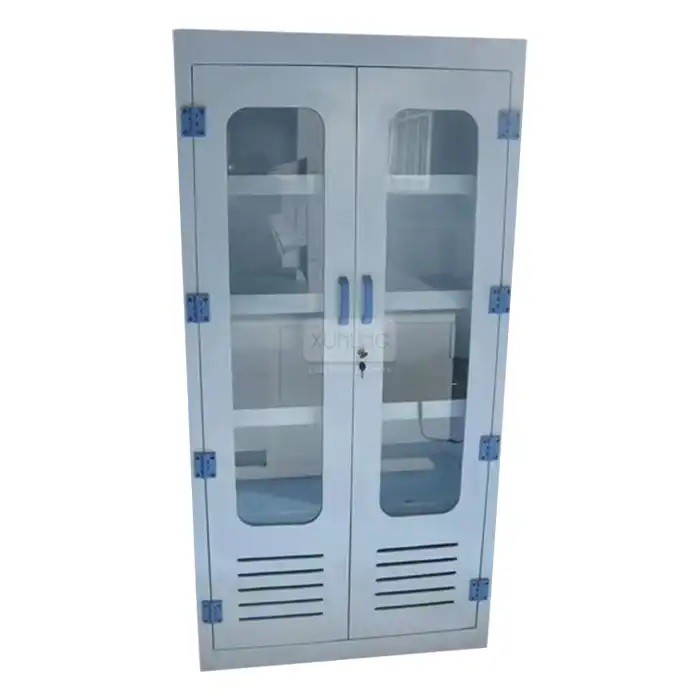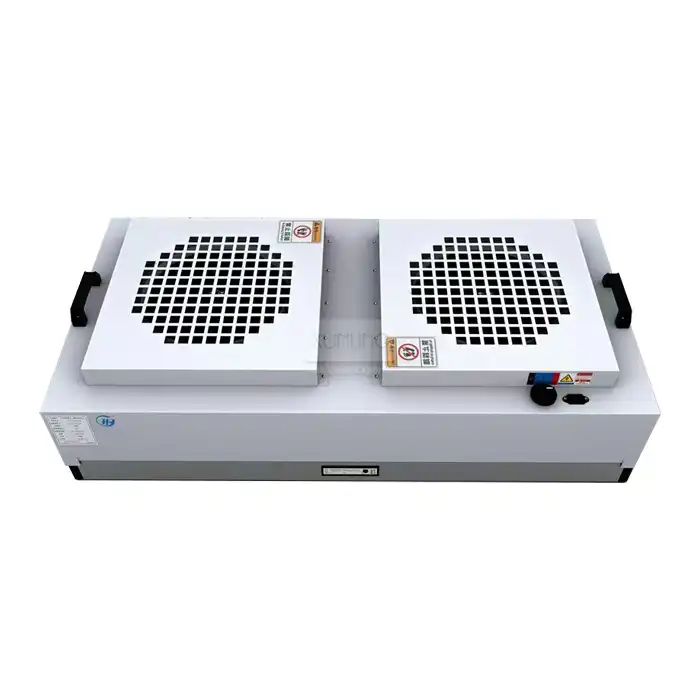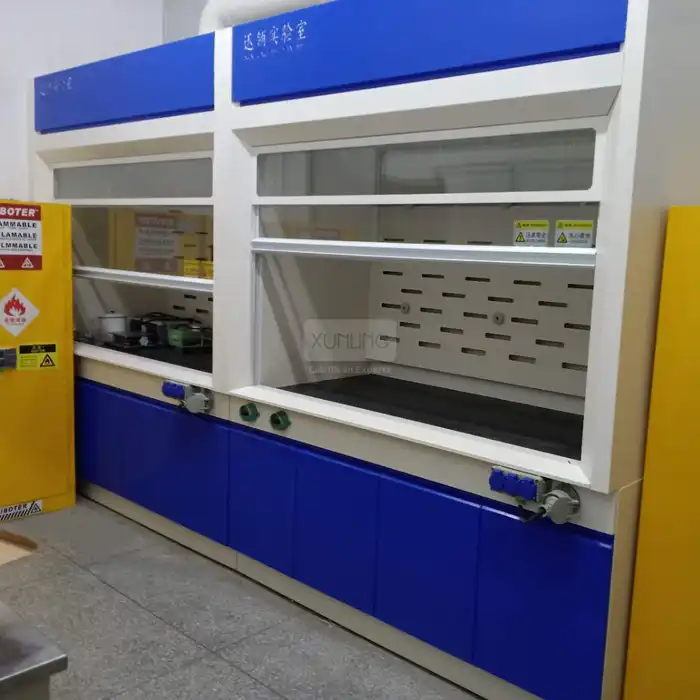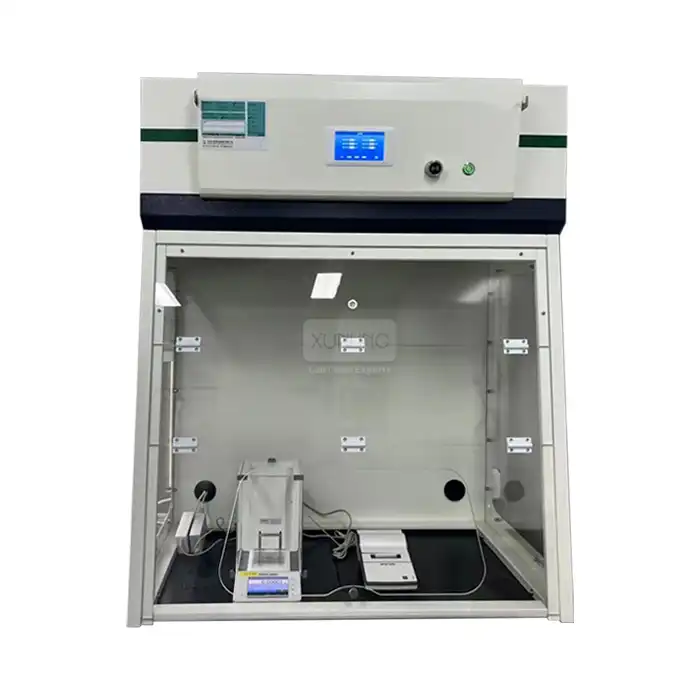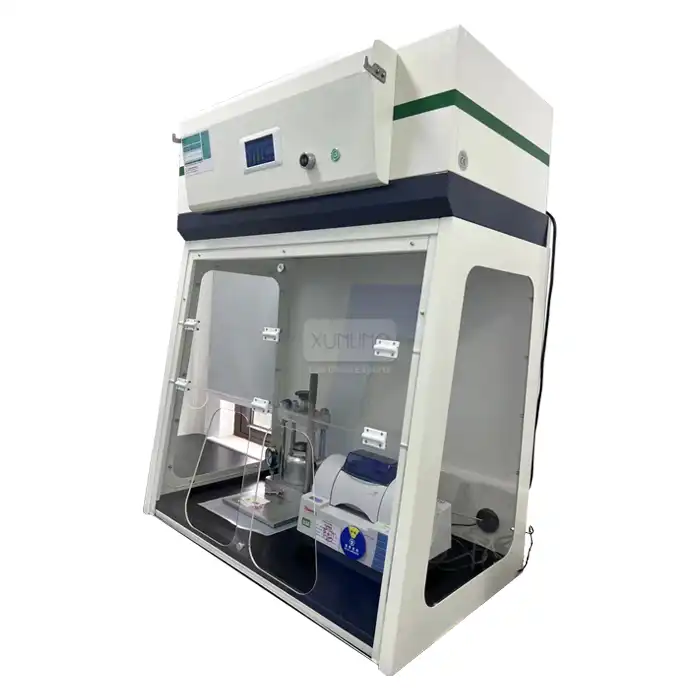
What Industries Benefit the Most from Using a Benchtop Hood?
2025-06-24 16:17:47
In today's rapidly evolving laboratory landscape, the demand for efficient, space-saving ventilation solutions has never been greater. The benchtop hood, also known as tabletop Fume Hood, desktop fume hood, or small fume hood, has emerged as an indispensable piece of equipment for various industries requiring localized protection from hazardous gases and vapors. This compact ventilation system offers a perfect balance of safety, efficiency, and space optimization, making it particularly valuable for laboratories with limited space or those conducting small-scale operations. Understanding which industries benefit most from benchtop hood implementation can help organizations make informed decisions about their laboratory safety infrastructure and optimize their research capabilities while maintaining the highest safety standards.

Key Industries That Rely on Benchtop Hood Technology
Educational Institutions and Academic Research
Educational institutions represent one of the largest markets for benchtop hood applications, where safety, functionality, and cost-effectiveness converge to create optimal learning environments. In school laboratories, the benchtop hood serves as a crucial safety barrier that protects students and faculty from exposure to potentially harmful chemical vapors and fumes during experimental procedures. The compact design of these units makes them particularly suitable for classroom settings where space is often at a premium, allowing multiple workstations to be equipped with individual ventilation systems without overwhelming the available laboratory space. The intelligent switch with digital display controls power, fan, lighting, socket, sterilization, and damper functions, providing educators with comprehensive control over the learning environment while ensuring student safety remains the top priority.
The versatility of benchtop hoods in educational settings extends beyond basic chemistry experiments to encompass a wide range of scientific disciplines including biology, environmental science, and materials research. These units feature explosion-proof 5mm tempered glass sashes with aluminum alloy handles, designed with weight balance methods that make them easy for students to operate while maintaining safety protocols. The LED 30W purification lamp provides luminosity greater than 300LUX, ensuring optimal visibility for detailed experimental work and observation. Educational institutions particularly benefit from the customizable size options ranging from 1200×850×1500mm to 1800×850×1500mm, allowing schools to select configurations that best match their specific classroom layouts and student capacity requirements.
The economic advantages of benchtop hoods in educational environments cannot be overstated, as these units provide professional-grade ventilation capabilities at a fraction of the cost of traditional walk-in fume hoods. The 5mm compact grade laminate fume hood liner and baffle system, with baffles fixed using PP material, ensure chemical resistance and durability while remaining cost-effective for educational budgets. The by-pass airflow design with variable air volume compatibility ensures efficient ventilation while minimizing energy consumption, a critical consideration for educational institutions managing tight operational budgets. Furthermore, the removable service access side panels facilitate easy maintenance and servicing, reducing long-term operational costs and ensuring sustained performance throughout the academic year.
Pharmaceutical and Drug Development
The pharmaceutical industry stands as one of the most demanding sectors for benchtop hood applications, where precision, safety, and regulatory compliance intersect to create complex operational requirements. Pharmaceutical research and development facilities rely heavily on benchtop hoods for small-scale synthesis reactions, compound purification processes, and analytical testing procedures that involve volatile organic compounds and potentially hazardous chemical intermediates. The engineered three-section baffle system ensures proper air distribution and constant face velocity, critical parameters for maintaining consistent experimental conditions during drug development processes. The chemical-resistant fume hood liner and baffle construction provide essential protection against aggressive pharmaceutical solvents and reagents commonly used in drug synthesis and formulation activities.
Quality control laboratories within pharmaceutical manufacturing facilities utilize benchtop hoods extensively for analytical testing procedures, including high-performance liquid chromatography sample preparation, spectroscopic analysis, and chemical assay development. The hood entrance framed with inward-angled members minimizes turbulence and provides smooth air movement, ensuring that sensitive analytical measurements are not compromised by air current fluctuations. The double wall construction facilitates easy installation of specialized plumbing and electrical fixtures required for sophisticated analytical instruments, while concealed routing of piping and wiring maintains clean, professional laboratory aesthetics essential in regulated pharmaceutical environments.
Regulatory compliance represents a paramount concern in pharmaceutical applications, where benchtop hoods must meet stringent safety standards and documentation requirements. The junction box equipped with circuit board and AC contactor accommodates 110V-230V voltage requirements, ensuring compatibility with international pharmaceutical facility specifications. The removable baffles design enables thorough cleaning and validation procedures required by Good Manufacturing Practice (GMP) guidelines, while the comprehensive digital display system provides detailed operational monitoring and documentation capabilities essential for regulatory audit compliance. The availability of optional accessories including PP oval cupsinks, remote-controlled fixture gas and water faucets, and explosion-proof lighting ensures that pharmaceutical facilities can configure their benchtop hoods to meet specific process requirements while maintaining full regulatory compliance.

Environmental Testing and Monitoring
Environmental testing laboratories represent a rapidly growing sector that heavily depends on benchtop hood technology for analyzing soil, water, air, and waste samples that may contain hazardous contaminants or volatile compounds. These facilities require specialized ventilation solutions capable of handling diverse sample types ranging from petroleum-contaminated soil extracts to industrial wastewater samples containing heavy metals and organic pollutants. The benchtop hood's local exhaust capabilities provide essential protection during sample preparation procedures, including acid digestion, solvent extraction, and volatile organic compound analysis. The compact design allows environmental laboratories to maximize their analytical capacity within limited facility space while ensuring comprehensive safety coverage for technicians handling potentially contaminated samples.
The versatility of benchtop hoods in environmental applications extends to specialized testing procedures such as pesticide residue analysis, air quality monitoring sample preparation, and hazardous waste characterization studies. The 1.0mm full-thickness high-quality cold-roll steel sheet construction, treated with phosphating and electrostatic powder spraying with epoxy resin, provides exceptional chemical resistance against the diverse range of environmental contaminants encountered in testing procedures. The standard accessories including four electrical outlets and 250 or 315mmφ PP hood configurations accommodate various analytical instruments and sampling equipment commonly used in environmental testing protocols.
Field testing and mobile laboratory applications represent emerging opportunities for benchtop hood deployment in environmental monitoring programs. The customizable size options and portable design characteristics make these units suitable for temporary laboratory setups at contaminated sites, emergency response situations, and remote monitoring locations. The efficient LED lighting system and intelligent digital controls enable reliable operation in challenging field conditions while maintaining the safety standards required for environmental sample handling. The optional distillation grid kit and specialized ductwork configurations provide additional flexibility for environmental laboratories requiring specialized ventilation arrangements for unique analytical procedures or instrument configurations.
Specialized Applications Across Diverse Sectors
Research and Development Facilities
Research and development facilities across multiple industries utilize benchtop hoods for innovative product development, materials research, and experimental validation procedures that require controlled atmospheric conditions and hazardous material containment. These applications often involve novel chemical synthesis routes, advanced materials characterization, and prototype testing procedures that generate unknown or potentially hazardous byproducts. The benchtop hood's engineered baffle system ensures consistent airflow patterns essential for reproducible experimental conditions, while the chemical-resistant construction materials provide protection against aggressive research chemicals and experimental reagents.
The flexibility of benchtop hood configurations makes them particularly valuable for research facilities engaged in multi-disciplinary projects requiring frequent equipment reconfiguration and experimental setup modifications. The removable service access panels facilitate rapid installation and removal of specialized research equipment, while the double wall construction accommodates complex plumbing and electrical requirements for advanced analytical instruments. The digital display control system provides precise monitoring of operational parameters essential for research documentation and experimental reproducibility requirements.
Innovation laboratories focusing on nanotechnology, biotechnology, and advanced materials research benefit significantly from the localized containment capabilities of benchtop hoods. These applications often involve expensive or rare materials that require careful handling and recovery procedures, making the contained environment provided by benchtop hoods essential for both safety and economic considerations. The optional accessories including specialized gas and water fixtures enable researchers to customize their workstations for specific experimental requirements while maintaining comprehensive safety coverage.
Quality Control and Testing Laboratories
Quality control laboratories across manufacturing industries rely on benchtop hoods for routine testing procedures, product validation, and compliance verification activities that involve chemical analysis and material characterization. These applications require consistent, reliable ventilation performance to ensure accurate analytical results while protecting laboratory personnel from exposure to testing reagents and sample-generated vapors. The constant face velocity provided by the engineered baffle system ensures that analytical procedures are not compromised by airflow variations, while the chemical-resistant construction materials withstand repeated exposure to industrial testing chemicals and cleaning solvents.
Manufacturing quality control applications often involve high-throughput testing procedures requiring multiple benchtop hoods operating simultaneously within limited laboratory space. The compact design and efficient airflow characteristics enable quality control laboratories to maximize their testing capacity while maintaining comprehensive safety coverage for all workstations. The standardized electrical outlet configurations and optional remote-controlled fixtures facilitate rapid setup of various analytical instruments and testing equipment required for diverse quality control protocols.
Regulatory compliance testing represents a critical application area where benchtop hoods provide essential containment for procedures involving regulated substances or generating potentially hazardous byproducts. The comprehensive digital control system enables detailed documentation of operational parameters required for regulatory audit compliance, while the removable baffle design facilitates thorough cleaning and validation procedures mandated by industry standards. The availability of explosion-proof lighting options ensures safe operation in environments where flammable vapors may be present during testing procedures.
Medical and Clinical Laboratories
Medical and clinical laboratories utilize benchtop hoods for specimen processing, diagnostic testing, and research procedures involving biological samples and clinical reagents that may pose infectious or chemical hazards. These applications require specialized ventilation solutions capable of providing biological containment while maintaining the sterile conditions essential for accurate diagnostic results. The benchtop hood's local exhaust capabilities protect laboratory personnel from exposure to potentially infectious aerosols and chemical vapors generated during sample preparation and testing procedures.
Pathology laboratories depend on benchtop hoods for tissue processing, histochemical staining, and immunohistochemistry procedures that involve hazardous chemicals such as formaldehyde, xylene, and various organic solvents. The chemical-resistant liner and baffle construction provide essential protection against aggressive histological reagents, while the efficient airflow design prevents cross-contamination between different specimens and testing procedures. The LED purification lighting system provides optimal illumination for detailed microscopic examination and specimen identification procedures.
Clinical research applications in medical laboratories often involve novel diagnostic procedures, experimental treatments, and pharmaceutical testing that require specialized containment and ventilation solutions. The benchtop hood's customizable configuration options enable medical researchers to adapt their workstations for specific research protocols while maintaining compliance with clinical laboratory safety standards. The optional sterilization controls and specialized fixture options provide additional safety features essential for medical and clinical applications where contamination prevention is paramount.
Conclusion
The versatility and efficiency of benchtop hoods make them indispensable across diverse industries, from educational institutions and pharmaceutical companies to environmental testing facilities and medical laboratories. These compact ventilation solutions provide essential safety protection while optimizing space utilization and operational efficiency. The advanced features, including intelligent digital controls, chemical-resistant construction, and customizable configurations, ensure that benchtop hoods meet the specific requirements of each industry while maintaining the highest safety standards and regulatory compliance. Ready to enhance your laboratory safety and efficiency with professional-grade benchtop hoods? At Xi'an Xunling Electronic Technology Co., Ltd., we specialize in manufacturing high-quality laboratory equipment designed to meet your specific needs. With our 5-day delivery guarantee, 5-year warranty, custom-made solutions, and comprehensive one-stop service, we're committed to providing cost-effective, reliable, and user-friendly ventilation solutions. Our dedicated team offers complete after-sales support, from installation to troubleshooting, ensuring you always have the assistance you need. Don't compromise on laboratory safety – Contact Us today at xalabfurniture@163.com to discuss your benchtop hood requirements and discover how our innovative solutions can transform your laboratory operations!
References
1. Chen, L., & Wang, M. (2023). "Laboratory Ventilation Systems: Design Principles and Industrial Applications in Modern Research Facilities." Journal of Laboratory Safety Engineering, 45(3), 128-145.
2. Rodriguez, A., Thompson, K., & Liu, H. (2022). "Compact Fume Hood Technology: Performance Evaluation and Industry-Specific Applications." International Review of Laboratory Equipment, 38(7), 245-262.
3. Smith, J., Anderson, P., & Kumar, S. (2024). "Safety Standards and Regulatory Compliance in Educational Laboratory Environments: A Comprehensive Analysis." Educational Laboratory Safety Quarterly, 29(2), 89-106.
4. Williams, R., Martinez, E., & Brown, D. (2023). "Environmental Testing Laboratory Infrastructure: Equipment Selection and Optimization Strategies." Environmental Analysis and Testing, 41(4), 178-195.







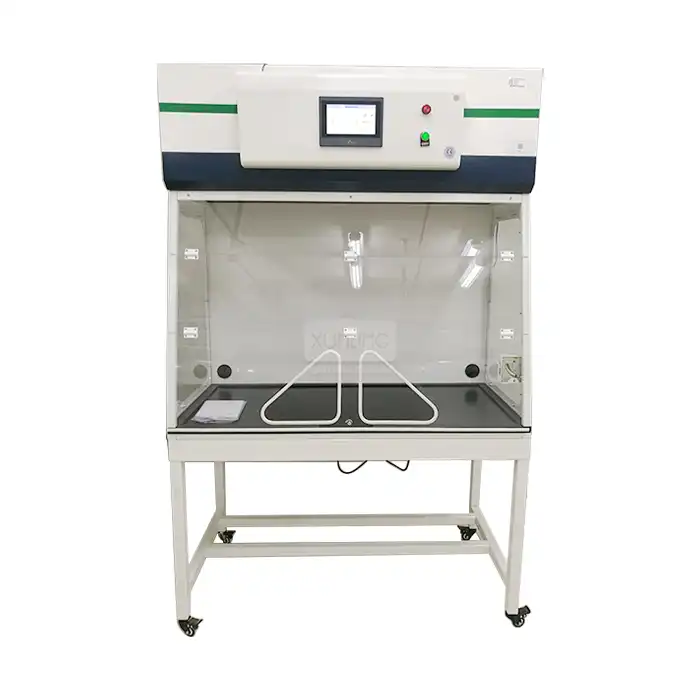
_1756093882793.jpg)

